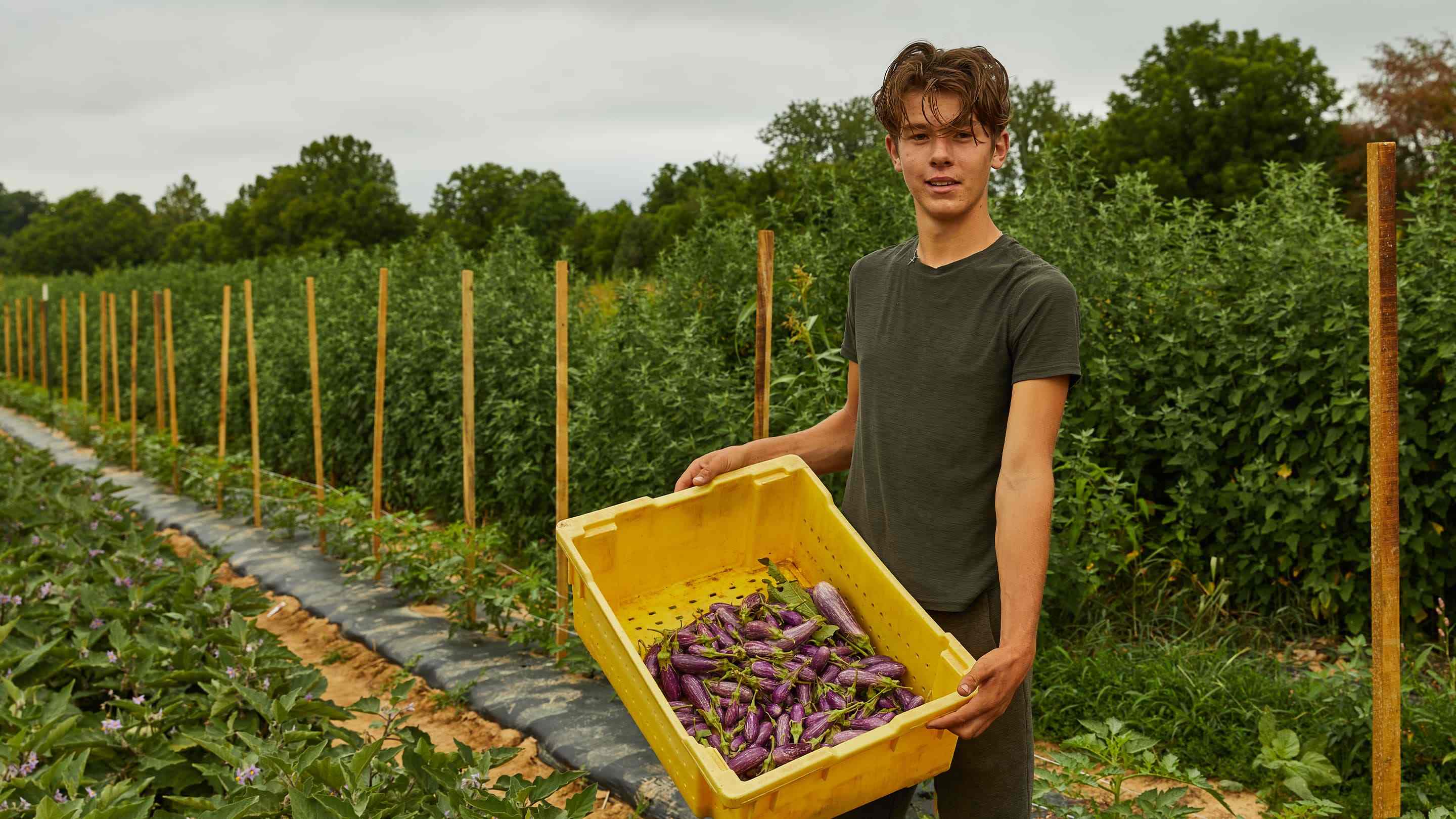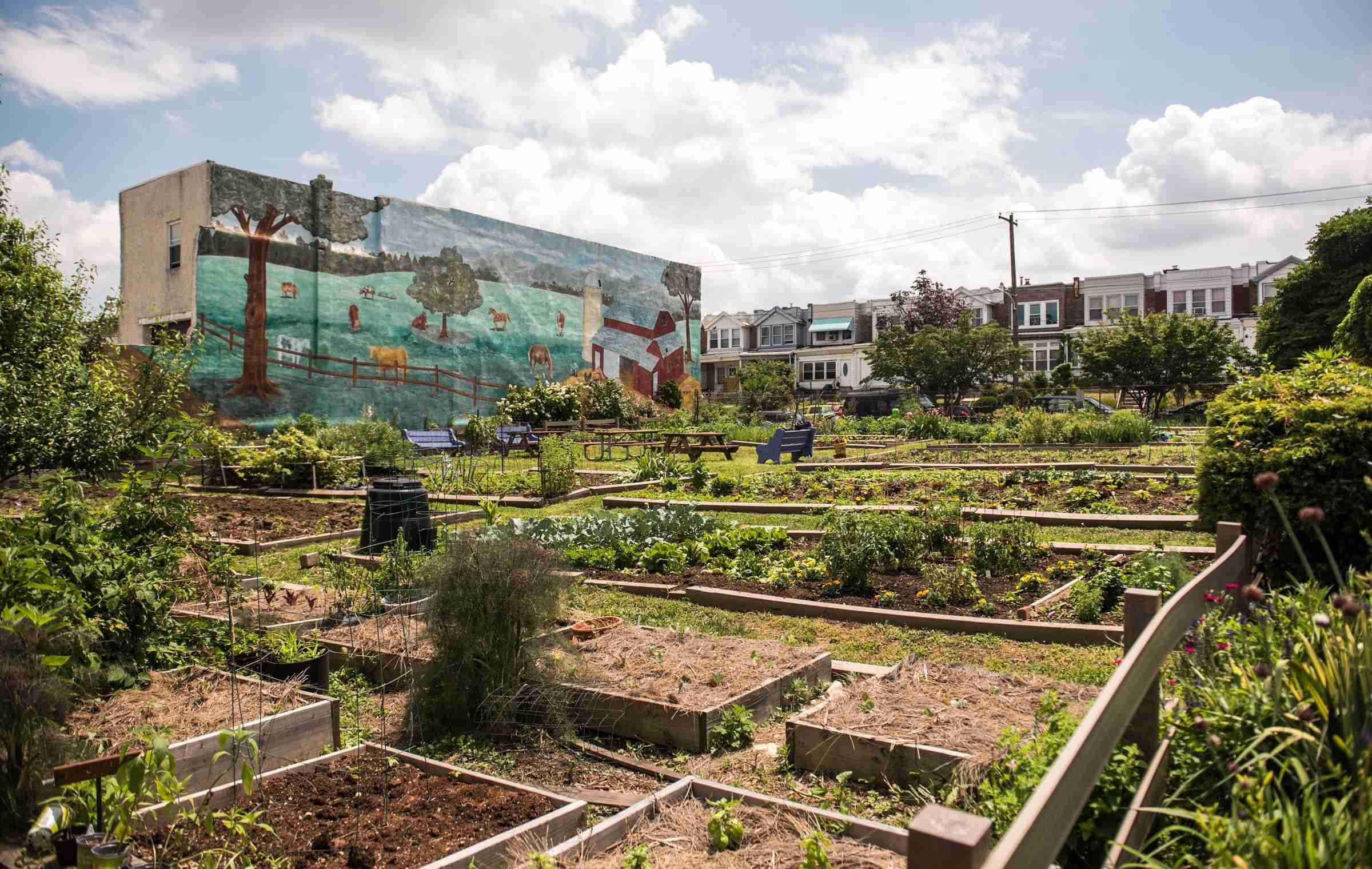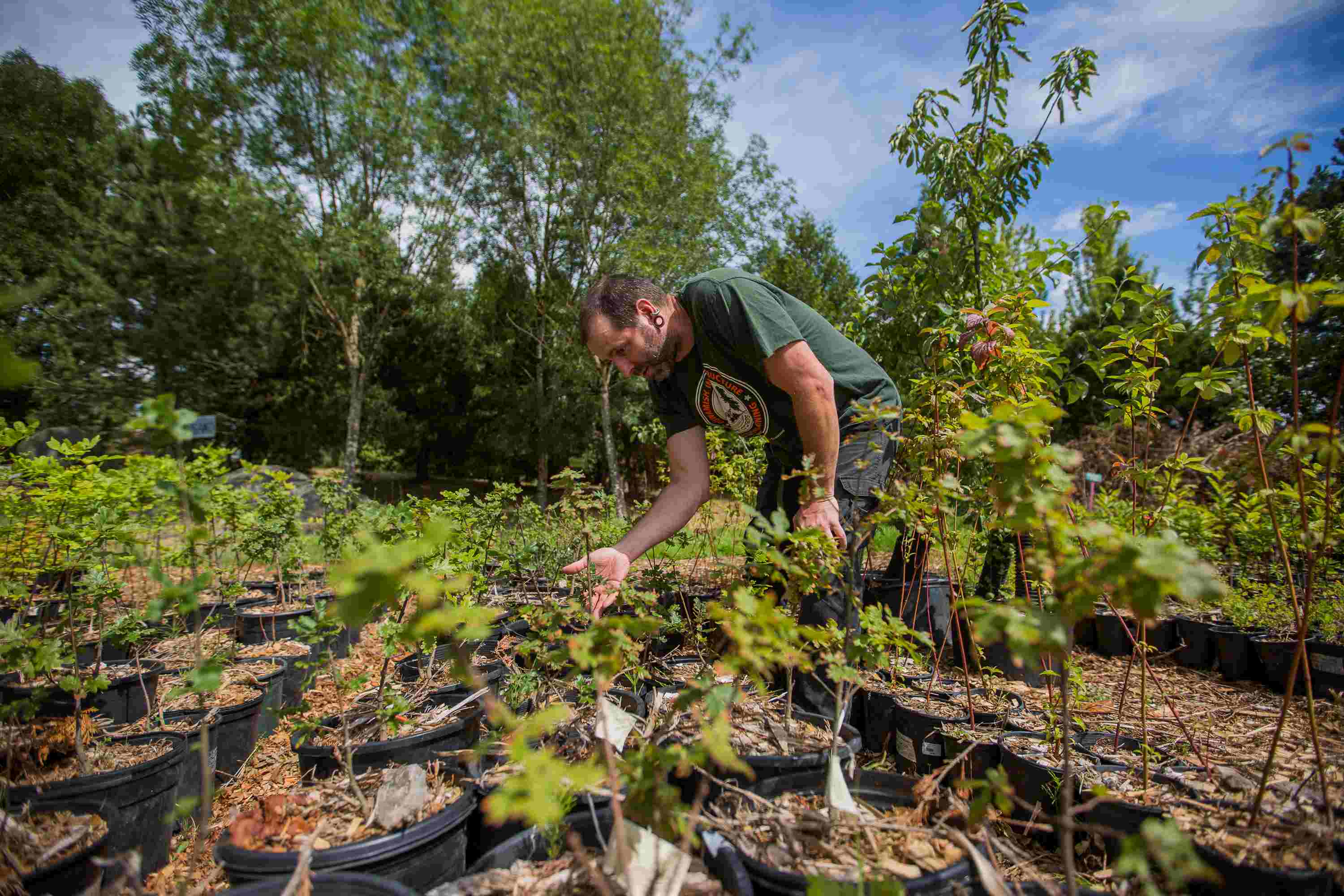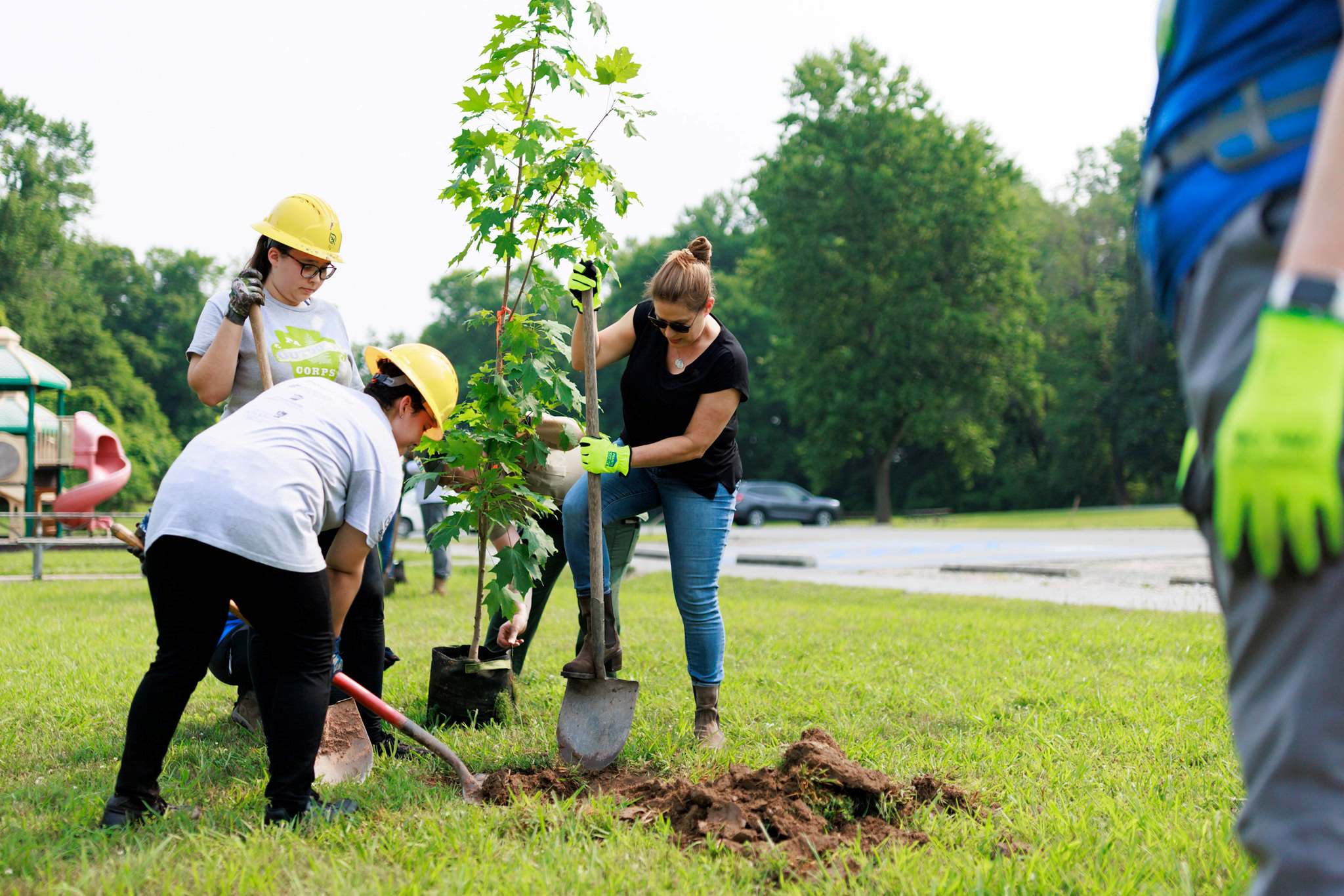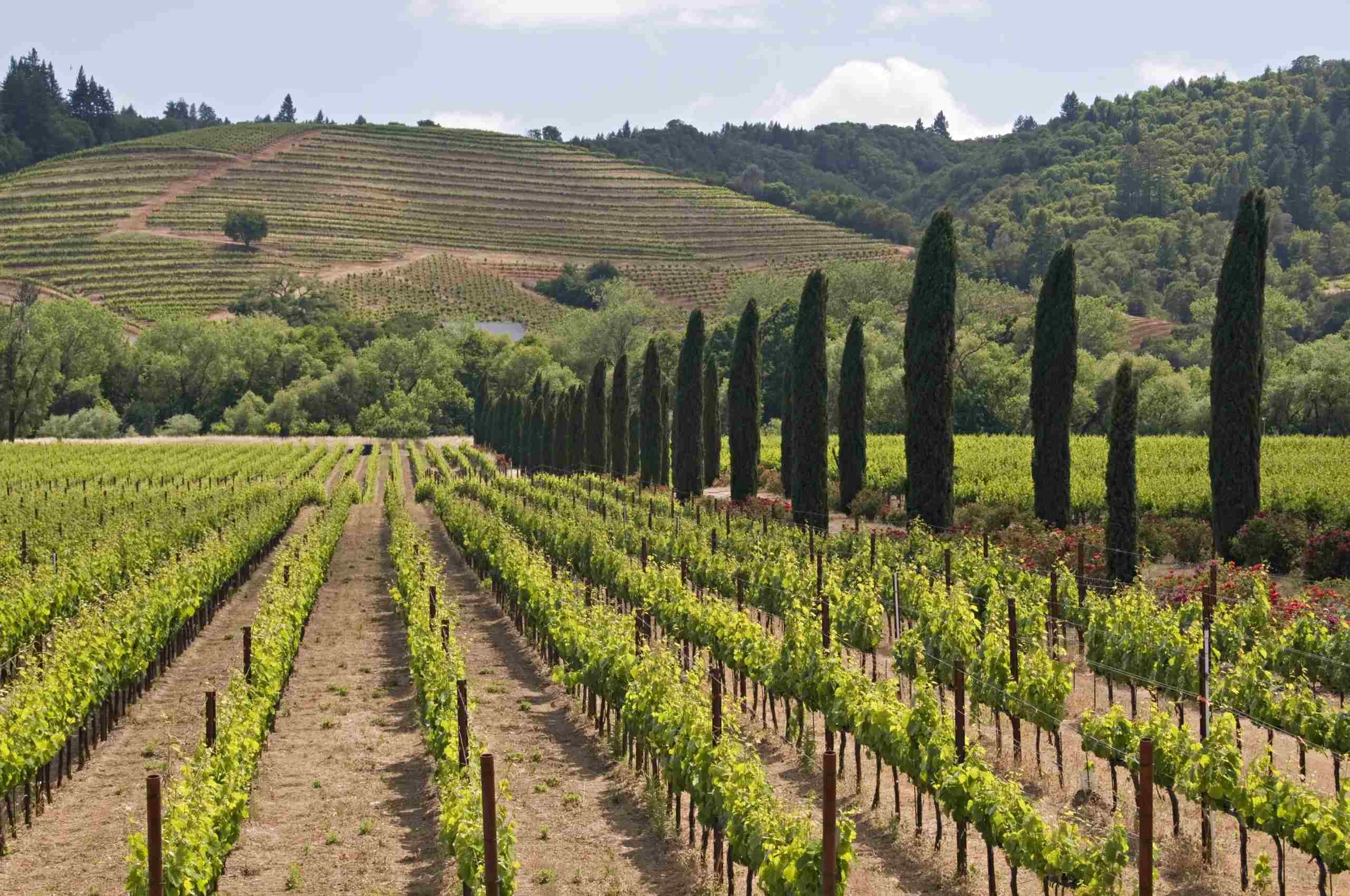Home>Gardening Basics>Understanding Soil>Where Is Zone 9 For Planting
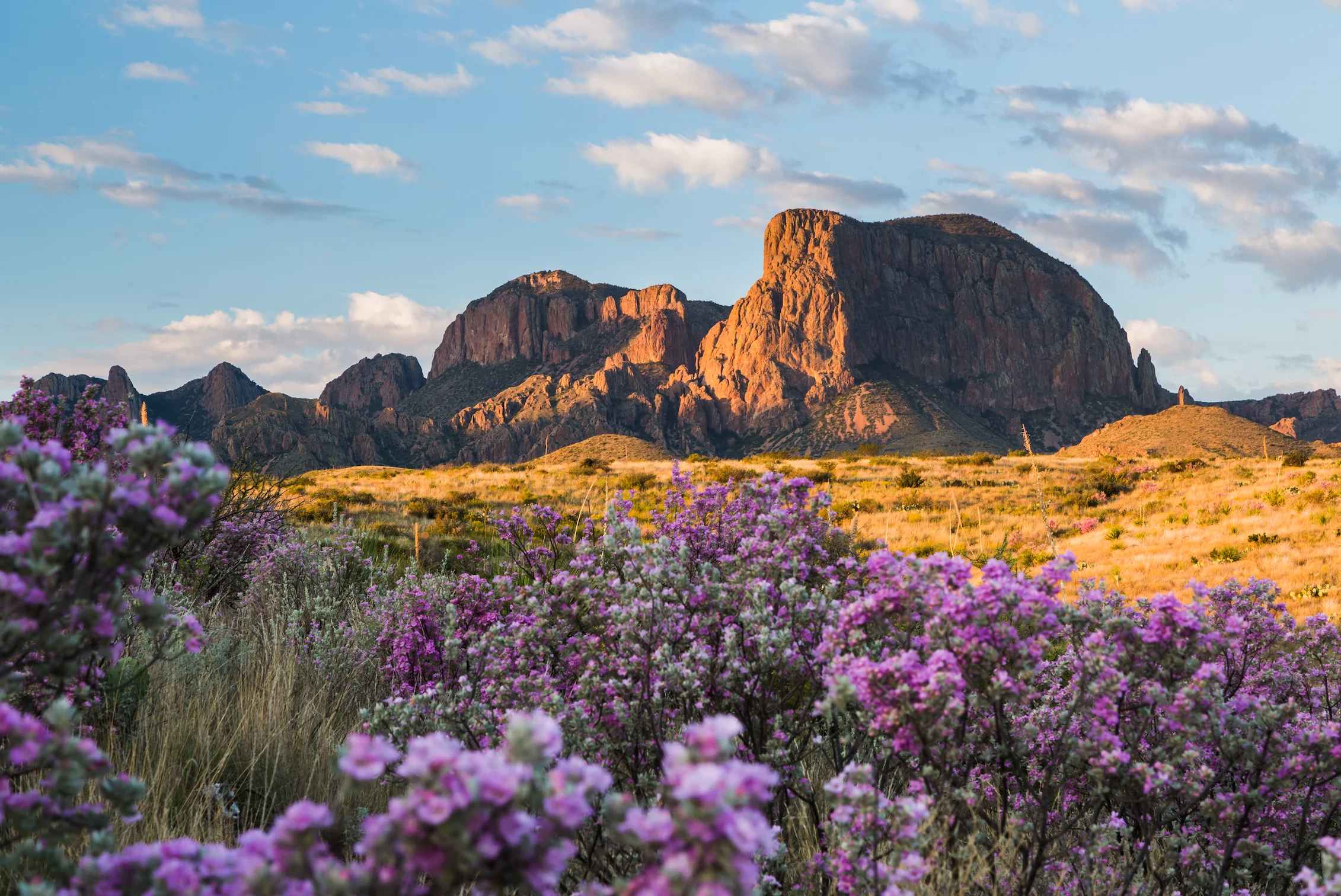

Understanding Soil
Where Is Zone 9 For Planting
Modified: February 10, 2024
Learn about understanding soil and discover where to find Zone 9 for optimal planting. Enhance your gardening knowledge and grow thriving plants with our expert guidance.
(Many of the links in this article redirect to a specific reviewed product. Your purchase of these products through affiliate links helps to generate commission for Chicagolandgardening.com, at no extra cost. Learn more)
Table of Contents
Introduction
Welcome to the fascinating world of gardening in Zone 9! If you have ever wondered where Zone 9 is or what it entails for plant enthusiasts, you have come to the right place. Zone 9 is known for its warm climate, which offers unique opportunities for growing a wide variety of plants. Whether you are an experienced gardener or just starting out, understanding the characteristics of Zone 9 will help you make informed decisions when it comes to selecting plants and caring for your garden.
Zone 9 is part of the United States Department of Agriculture (USDA) Plant Hardiness Zone Map, which is a valuable resource for gardeners across the country. This map divides the United States into different zones based on the average annual minimum temperature. Zone 9 is generally characterized by mild winters and hot summers, making it an ideal region for gardening year-round.
One of the key factors that distinguishes Zone 9 from other zones is its relatively high average winter temperatures. The minimum temperature range in Zone 9 typically falls between 20 to 30 degrees Fahrenheit (-6 to -1 degrees Celsius). This means that frost is rare and cold snaps are generally short-lived. The warm climate allows for prolonged growing seasons, which opens up a world of possibilities for gardeners.
The soil composition in Zone 9 can vary depending on the specific location. From sandy to clayey soils, gardeners in Zone 9 have the opportunity to work with a diverse range of soil types. Understanding the characteristics of your soil and knowing how to properly amend it can greatly impact the success of your garden. In Zone 9, good soil drainage is especially important to prevent waterlogging and root rot, as the warm climate can lead to excessive moisture retention.
With its warm climate and diverse soil types, Zone 9 is home to a wide variety of plants. From beautiful flowers to delicious fruits and vegetables, gardeners in this zone have a plethora of choices. However, it’s important to note that not all plants thrive in Zone 9. Factors like heat tolerance, water requirements, and sun exposure play crucial roles in determining which plants are best suited for this region.
In this article, we will explore the climate and temperature range in Zone 9, examine the different soil types found in this zone, and provide a comprehensive list of plants that are well-adapted to its conditions. We will also share some valuable gardening tips to help you make the most of your Zone 9 garden. So grab your gardening gloves and let’s dive into the wonderful world of Zone 9 gardening!
What is Zone 9?
Zone 9 refers to a specific geographic region as defined by the USDA Plant Hardiness Zone Map. This map divides the United States into 13 zones based on the average annual minimum temperature. Zone 9 is known for its warm climate and mild winters, making it a desirable region for gardening enthusiasts.
The USDA Plant Hardiness Zone Map is a valuable tool for gardeners as it helps them determine the best plants for their specific region. Each zone is assigned a numerical value based on the minimum temperature range that occurs in that area. For Zone 9, the average annual minimum temperature ranges from 20 to 30 degrees Fahrenheit (-6 to -1 degrees Celsius).
One of the key characteristics of Zone 9 is its mild winters. Frost is rare in this region, and cold snaps are generally short-lived. This means that gardeners in Zone 9 can enjoy longer growing seasons compared to colder zones. The warm climate allows for a wide variety of plants to thrive throughout the year.
Zone 9 also experiences hot summers, which can be both a blessing and a challenge for gardeners. The high temperatures can promote rapid growth and flowering in many plants, but they can also increase the risk of drought and water stress. It’s important for gardeners in Zone 9 to pay attention to their plants’ water requirements and provide adequate irrigation to ensure their health and vitality.
Another factor that distinguishes Zone 9 is its diverse soil types. In this region, you may encounter sandy soils, clayey soils, or a combination of both. The soil composition plays a crucial role in plant growth and development. Gardeners in Zone 9 should pay attention to the characteristics of their soil and may need to amend it to ensure optimal conditions for their plants.
Zone 9 encompasses various parts of the United States, including portions of California, Arizona, Texas, Florida, and the Gulf Coast region. The specific climate and growing conditions may vary within Zone 9 due to differences in elevation, proximity to bodies of water, and other geographical factors. It is important for gardeners in this zone to be aware of their local microclimate and make appropriate plant selections accordingly.
Overall, Zone 9 offers gardeners a wide range of possibilities for cultivating lush and thriving gardens. From vibrant flowers to bountiful harvests of fruits and vegetables, this zone provides ample opportunities to indulge in the joys of gardening. By understanding the unique characteristics of Zone 9 and selecting plants suited to its climate and soil conditions, gardeners can create beautiful and productive gardens that flourish throughout the year.
Climate and Temperature Range in Zone 9
Zone 9 is known for its warm climate, providing ideal conditions for gardening year-round. The climate in this zone is characterized by mild winters and hot summers, making it a paradise for both plants and gardeners.
The average annual minimum temperature range in Zone 9 falls between 20 to 30 degrees Fahrenheit (-6 to -1 degrees Celsius). Frost is rare in this region, and cold snaps are generally short-lived. This means that gardeners in Zone 9 can enjoy longer growing seasons compared to cooler zones.
During the winter months, Zone 9 experiences milder temperatures, allowing many plants to thrive. The mild winters allow gardeners to grow a variety of cold-tolerant plants, such as lettuce, kale, and broccoli, throughout the year. However, it’s important to note that even though the winters are mild, occasional cold spells can still occur, and gardeners should be prepared to protect their sensitive plants during these periods.
Summers in Zone 9 are characterized by hot temperatures, which can be both a blessing and a challenge. The high temperatures promote rapid growth and flowering in many plants, allowing for a fruitful season. However, the hot summers also increase the risk of drought and water stress. Gardeners need to provide adequate irrigation and monitor soil moisture levels to ensure their plants’ health and vigor.
The combination of warm, mild winters and hot summers creates an ideal environment for a diverse range of plants. Zone 9 is well-suited for growing a variety of fruit trees, including citrus, avocado, and figs. It is also a great region for cultivating heat-loving crops such as tomatoes, peppers, and eggplants. Many flowering plants, such as bougainvillea, hibiscus, and plumeria, thrive in this zone, adding splashes of color and beauty to gardens.
Overall, the climate in Zone 9 offers gardeners a unique opportunity to garden year-round and enjoy a wide variety of plant selections. The mild winters and hot summers create a favorable environment for growing an abundance of fruits, vegetables, and ornamental plants. By understanding and working with the climate conditions in Zone 9, gardeners can create thriving and visually stunning gardens that bring joy and beauty to their outdoor spaces.
Soil Types in Zone 9
Zone 9 encompasses a diverse range of soil types, each with its own characteristics and considerations for gardeners. Understanding the different soil types in this zone is key to creating a successful and thriving garden.
One common soil type found in Zone 9 is sandy soil. Sandy soil is characterized by its loose texture and excellent drainage. This type of soil warms up quickly and is easy to work with, making it suitable for many plants. However, sandy soil tends to have poor water retention and nutrient-holding capacity. Gardeners in Zone 9 with sandy soil may need to supplement their plants with regular irrigation and fertilization.
Another prevalent soil type in Zone 9 is clayey soil. Clay soil is known for its tight texture and high moisture retention. While it retains water well, it can become compacted and poorly drained, leading to potential problems such as root rot. Gardeners with clay soil may need to amend their soil with organic matter, such as compost or peat moss, to improve drainage and create a more suitable growing environment for plants.
Some areas in Zone 9 may have a combination of sandy and clayey soil, known as loam. Loam soil is a balanced soil type that offers good drainage, moisture retention, and nutrient availability. Gardeners with loamy soil are fortunate as they have a versatile and fertile soil foundation to work with. Adding organic matter to loamy soil can further improve its structure and enhance plant growth.
It’s important to note that within Zone 9, there can be variations in soil composition depending on the specific location. Factors such as proximity to bodies of water, elevation, and geological formations can influence the soil’s characteristics. Gardeners in Zone 9 should consider conducting a soil test to determine the specific pH levels and nutrient content of their soil. This information can guide them in selecting appropriate amendments and fertilizers for their plants.
Regardless of the soil type in Zone 9, good soil management practices are essential for successful gardening. Adding organic matter, such as compost and mulch, can improve soil structure, increase fertility, and enhance moisture retention. Regularly testing the soil’s pH and nutrient levels can help ensure that plants have the necessary nutrients for healthy growth.
In summary, Zone 9 in gardening is home to various soil types, including sandy soil, clayey soil, and loam. Each soil type has its own benefits and challenges, but with proper soil management and amendments, gardeners can create a favorable growing environment for a wide range of plants. By understanding the characteristics of their soil and implementing effective soil management practices, gardeners in Zone 9 can cultivate thriving and flourishing gardens.
Plants Suitable for Zone 9
Zone 9 offers a wealth of opportunities for gardeners to grow a diverse range of plants. The warm climate and mild winters make this zone ideal for a wide variety of fruits, vegetables, flowers, and ornamental plants. Here are some popular plants that are well-suited to thrive in Zone 9 gardens:
- Fruit Trees: Zone 9 is known for its abundance of fruit tree options. Citrus trees, including oranges, lemons, and grapefruits, thrive in this zone. Other fruit trees that do well in Zone 9 include avocado, mango, figs, and pomegranate.
- Vegetables: Many heat-tolerant vegetables flourish in Zone 9. Some popular choices include tomatoes, peppers, eggplants, okra, and sweet potatoes. Leafy greens like lettuce, spinach, and kale can also be grown throughout the year, thanks to the mild winters in this zone.
- Herbs: Zone 9 is a paradise for growing herbs. Fragrant herbs like basil, rosemary, thyme, and oregano thrive in the warm climate. Other herbs such as cilantro, parsley, and mint also do well in this zone.
- Flowering Plants: Zone 9 offers a wide selection of vibrant flowers to brighten up your garden. Some popular choices include bougainvillea, hibiscus, plumeria, lantana, and bird of paradise. Roses, geraniums, and sunflowers are also well-suited to the warm climate of Zone 9.
- Low-Maintenance Plants: If you’re looking for low-maintenance plants, consider options like succulents and cacti. These plants are well-adapted to the arid conditions of Zone 9 and require minimal water and care.
When selecting plants for Zone 9, it’s important to consider their heat tolerance, water requirements, and sun exposure preferences. Native plants and those adapted to Mediterranean climates tend to thrive in this zone, as they are well-suited to its specific growing conditions.
Gardeners in Zone 9 should also take into account the microclimates within their gardens. Factors such as shade from buildings or trees, slope, and proximity to bodies of water can create variations in temperature and sun exposure. It’s crucial to choose plants that are suitable for the specific microclimate in each area of the garden.
In addition to selecting the right plants, proper care and maintenance are essential for their success. Regular watering, especially during hot summer months, is crucial to keep plants healthy and hydrated. Adding mulch around plants can help reduce evaporation and maintain soil moisture. Pruning and fertilizing plants as needed will also promote their growth and overall health.
With careful planning and consideration of the specific requirements of each plant, gardeners in Zone 9 can create a stunning and flourishing garden filled with a variety of fruits, vegetables, flowers, and ornamentals. Take advantage of the warm climate and explore the vast array of plant options that thrive in Zone 9.
Gardening Tips for Zone 9
Gardening in Zone 9 offers unique opportunities and challenges due to its warm climate and mild winters. To ensure a successful garden, consider the following tips specifically tailored to the conditions of Zone 9:
- Choose plants suited to the climate: Select plants that are well-adapted to the warm temperatures and mild winters of Zone 9. Look for heat-tolerant varieties and those native to Mediterranean or subtropical regions.
- Consider planting in fall and winter: Take advantage of the mild winters to plant cool-season crops such as lettuce, kale, and broccoli. These vegetables can be grown throughout the winter months, providing fresh produce for your table.
- Provide regular irrigation: Zone 9 can experience hot and dry periods, so it’s important to provide consistent and adequate water to your plants. Deep watering is recommended to encourage deep root growth and withstand dry spells.
- Mulch and conserve soil moisture: Apply a layer of organic mulch around plants to help conserve soil moisture, suppress weeds, and regulate soil temperature. Mulching also improves soil structure and nutrient retention.
- Protect plants during occasional cold snaps: While the winters in Zone 9 are generally mild, occasional cold snaps can still occur. Be prepared to cover tender plants with blankets, row covers, or other protective materials to shield them from frost and freezing temperatures.
- Practice proper soil management: Determine the soil type in your garden and make necessary amendments to improve its structure, drainage, and nutrient content. Conducting a soil test can provide valuable information for proper fertilization.
- Implement regular pest and disease management: The warm climate in Zone 9 can harbor various pests and diseases. Monitor your plants regularly for signs of infestation or disease and take appropriate measures, such as organic pest control methods or fungicides, if necessary.
- Consider shade gardening: Some plants may benefit from partial shade, especially during the hot summer months. Utilize structures, such as shade cloth or pergolas, to provide relief from intense midday sun and prevent sunburn or heat stress on plants.
- Rotate crops and practice companion planting: To prevent the buildup of pests and diseases in the soil, practice crop rotation by changing the location of plants from year to year. Additionally, companion planting can help deter pests and enhance plant growth by pairing compatible plants together.
- Regularly prune and maintain your garden: Pruning encourages healthier growth, improves air circulation, and prevents overcrowding in your garden. Remove dead or damaged branches, shape shrubs and trees, and maintain a tidy and well-kept garden overall.
By following these gardening tips tailored to the unique conditions of Zone 9, you can maximize the success and beauty of your garden. Remember to stay proactive, observe your plants closely, and make adjustments as needed to create a thriving and enjoyable garden that thrives in the warm climate of Zone 9.
Popular Gardening Zones Compared to Zone 9
When it comes to gardening, each USDA Plant Hardiness Zone offers unique growing conditions and challenges. While Zone 9 has its own distinct characteristics, let’s explore how it compares to other popular gardening zones:
Zone 9 vs. Zone 8: Zone 8 is located slightly north of Zone 9 and typically experiences colder winters and milder summers. In Zone 8, gardeners can grow a wide range of cool-season and warm-season crops. Winter temperatures in Zone 8 can drop to 10 to 20 degrees Fahrenheit (-12 to -7 degrees Celsius). Gardeners in Zone 8 should focus on selecting cold-hardy plants and protecting sensitive plants during frosty periods.
Zone 9 vs. Zone 10: Zone 10 is characterized by its mild winters and hot summers, similar to Zone 9. However, Zone 10 generally experiences higher temperatures, especially during the summer months. With average winter minimum temperatures ranging from 30 to 40 degrees Fahrenheit (-1 to 4 degrees Celsius), Zone 10 offers an extended growing season for both cool-season and warm-season crops. Gardeners in Zone 10 may need to exercise caution during hot spells and ensure proper irrigation to prevent heat stress in plants.
Zone 9 vs. Zone 5: Zone 5 is located in cooler regions of the United States and has significantly colder winters compared to Zone 9. Winter temperatures in Zone 5 can drop as low as -20 to -10 degrees Fahrenheit (-29 to -23 degrees Celsius). Gardeners in Zone 5 focus on cold-hardy plant selections and often rely on season extension techniques such as row covers and cold frames to protect their plants from freezing temperatures. The shorter growing season in Zone 5 makes it necessary to start seeds indoors or utilize early maturing varieties.
Zone 9 vs. Zone 11: Zone 11 is a tropical paradise known for its year-round warmth and minimal temperature fluctuations. Winter temperatures in Zone 11 rarely fall below 40 degrees Fahrenheit (4 degrees Celsius). Gardeners in Zone 11 have the luxury of growing heat-loving plants all year, including tropical fruits, orchids, and palms. Unlike Zone 9, frost and freezing temperatures are non-existent in Zone 11, creating an optimal environment for a wide variety of exotic plants.
Comparing Zone 9 to other gardening zones highlights the different climates and growing conditions across the United States. Each zone offers unique opportunities and challenges for gardeners. Understanding the distinct characteristics of your specific zone is essential in selecting suitable plants and implementing appropriate gardening practices.
As climate patterns change and gardening practices evolve, it’s important to stay informed about the specific requirements of your gardening zone. Exploring the range of different gardening zones allows gardeners to expand their knowledge and explore new possibilities. So whether you are in Zone 9 or any other zone, embrace the uniqueness of your gardening zone and embark on a rewarding journey of cultivating beautiful and productive gardens.
Conclusion
Gardening in Zone 9 offers a world of possibilities for plant enthusiasts. With its warm climate, mild winters, and diverse soil types, Zone 9 provides an ideal environment for growing a wide range of plants, from fruits and vegetables to vibrant flowers and ornamentals.
By understanding the unique characteristics of Zone 9, gardeners can make informed decisions when it comes to selecting plants and caring for their gardens. The mild winters in this zone allow for an extended growing season, while the hot summers promote rapid growth and flowering. However, gardeners must also be mindful of the occasional cold snaps and the need to protect sensitive plants.
Zone 9 is home to a variety of soil types, including sandy soil, clayey soil, and loam. Proper soil management, such as amending the soil and ensuring good drainage, is essential for creating a healthy and productive garden in this zone.
Popular plants suitable for Zone 9 include fruit trees like citrus and avocado, heat-tolerant vegetables, fragrant herbs, and vibrant flowering plants. By selecting plants that are well-adapted to the specific climate and microclimate of Zone 9, gardeners can create beautiful and flourishing outdoor spaces.
In addition to plant selection, implementing proper watering, mulching, and pest management practices is key to maintaining healthy and thriving gardens in Zone 9. Regular maintenance, such as pruning and fertilizing, ensures that plants remain vigorous and productive.
When comparing Zone 9 to other popular gardening zones, it becomes evident that each zone offers its own unique benefits and considerations. By understanding the distinct qualities of your specific gardening zone, you can tailor your gardening practices to maximize success and enjoyment.
So whether you are an experienced gardener or just starting out, Zone 9 presents a world of opportunities to explore and create a flourishing garden. Embrace the warm climate, utilize the diverse soil types, and enjoy the unique benefits that Zone 9 has to offer as you embark on your gardening journey. Happy gardening in Zone 9!
